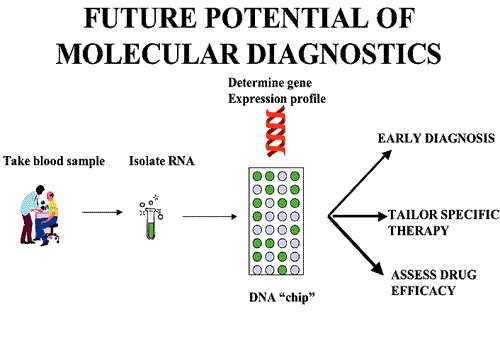| 2004 |

|
YEAR BOOK |
St James's Hospital & Trinity College Dublin
|
Achieving a cellular and molecular understanding of cancer
|

-
�Identification and application of biomarkers to disease diagnosis, disease sub classification and response to therapy.
-
�Key cellular processes such as cell signalling, apoptosis (cell death) and gene expression as therapeutic targets.
New approaches, such as gene expression profiling, can also help examine more complex diagnostics conundrums and allow us to investigate disease heterogeneity at the molecular level, which may influence treatment response (see Figure). A collaboration with the Spanish National Cancer Centre in Madrid has allowed us to develop a gene expression profiling approach in a T Cell Lymphoma that is particular to the skin and, using this microarray analysis, it has been possible to identify a six gene signature which can be used to diagnose this disease.
On the therapeutic front, we have looked at exploiting cell signalling, apoptosis and gene expression as potential therapeutic targets. In Chronic Myeloid Leukaemia (CML), a particular molecular abnormality gives rise to the leukaemia specific protein (P210) which makes CML cells more resistant to standard chemotherapy. We have looked at manipulating the cellular pathways in CML in order to try to make these cells more sensitive to chemotherapy. In collaboration with Kings College London, we have developed an approach that makes use of a negative regulator of the cell cycle, beta galactoside binding protein. We have shown that this protein can induce apoptosis in CML cells in the laboratory by inhibiting a particular pathway and bypassing the negative effects of the P210 protein.
Using these types of approaches in the laboratory has allowed us to gain a much greater understanding of how leukaemia cells work, and also provides us with new diagnostics and potential new therapeutic options in this disease.
Contact: Professor Mark Lawler, Institute of Molecular Medicine, Trinity Centre for Health Sciences, St James's Hospital, Dublin 8;
Tel: 01 4103588; E-mail: [email protected]